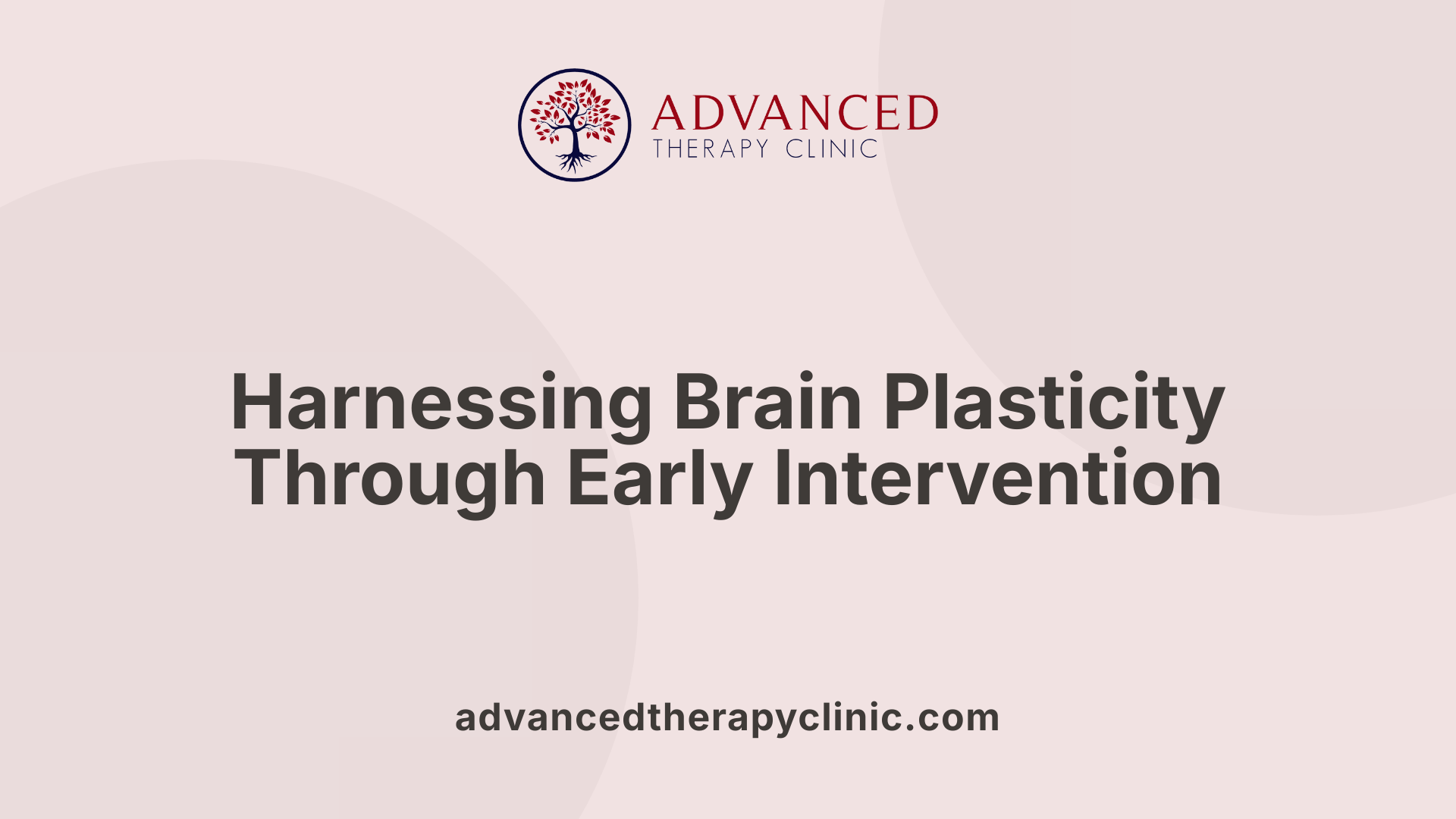How ABA Therapy Teaches Problem-Solving Skills


Understanding ABA Therapy and Its Impact on Problem-Solving
Applied Behavior Analysis (ABA) therapy is a scientifically grounded approach to teaching and improving behavior. Primarily used to support individuals with Autism Spectrum Disorder (ASD), ABA therapy leverages principles of learning and motivation to foster essential skills, such as communication, social interaction, and importantly, problem-solving. This article explores how ABA therapy teaches problem-solving skills by breaking down its foundational methods and illustrating its personalized, data-driven approach.
Foundations of ABA Therapy: Science and Principles

What is ABA Therapy?
Applied Behavior Analysis (ABA) is a therapeutic approach grounded in the science of learning and behavior. It is designed to increase helpful behaviors and reduce those that may hinder an individual's development, especially in children with Autism Spectrum Disorder (ASD).
How Does Operant Conditioning Influence ABA?
At the heart of ABA is operant conditioning—a method that uses consequences to modify behavior. By analyzing what happens before and after a behavior, ABA targets changes that promote positive outcomes.
The Role of Motivation and Learning
ABA therapy leverages principles of motivation to encourage desirable behaviors. This involves reinforcing actions that lead to learning new skills in communication, social interaction, attention, and academics.
Core ABA Principles
Several foundational concepts guide ABA interventions:
- Reinforcement: Positive reinforcement rewards desired behaviors to increase their frequency.
- Functional Behavior Assessment (FBA): Identifies reasons behind behaviors to tailor effective interventions.
- Data-Driven Customization: Treatment plans are regularly adjusted based on collected data to meet individual needs and preferences.
Together, these principles make ABA a highly personalized and scientifically supported therapy for promoting meaningful behavioral change.
Early Intervention and Brain Plasticity in Problem-Solving Skill Development

Why is early intervention important for children with ASD?
Early intervention plays a crucial role in enhancing outcomes for children with Autism Spectrum Disorder (ASD). Intervening during the early years helps improve vital areas such as social skills and academic achievement. Because ASD affects communication, behavior, and interactions, starting therapy early increases the chances of effective skill development.
How does brain plasticity in early childhood affect treatment?
The brain's plasticity, or ability to change and adapt, is particularly high in early childhood. This heightened plasticity allows for more effective behavioral modification when interventions like Applied Behavior Analysis (ABA) are introduced early. By leveraging this adaptability, treatments can promote the development of new neural connections critical for learning and problem-solving.
What outcomes can be expected from early intervention?
Early intervention facilitates several benefits for children with ASD, including improved communication abilities, stronger social interaction, and better problem-solving skills. Additionally, these improvements often translate into enhanced academic performance and greater independence. Overall, early and targeted interventions tap into brain plasticity to foster meaningful progress across multiple domains.
ABA Therapy Techniques That Foster Problem-Solving

What Are the Main ABA Techniques?
Applied Behavior Analysis (ABA) uses several structured techniques to support skill development in children with Autism Spectrum Disorder (ASD). Four prominent methods include Discrete Trial Training (DTT), Natural Environment Teaching (NET), Pivotal Response Treatment (PRT), and Functional Communication Training (FCT).
Discrete Trial Training
DTT breaks skills into small, manageable steps and teaches them one at a time through repeated trials. Each trial involves a clear instruction, a response from the child, and immediate feedback, often using positive reinforcement. This method fosters problem-solving by encouraging children to respond correctly to specific prompts and learn through repetition.
Natural Environment Teaching
NET emphasizes learning within real-world settings, encouraging children to try skills during everyday activities. This approach helps children apply problem-solving skills naturally, promoting flexible thinking and spontaneous communication.
Pivotal Response Treatment
PRT focuses on pivotal areas such as motivation and response to multiple cues. By targeting motivation, PRT encourages children to engage actively in learning, enhancing their ability to initiate problem-solving and adjust to various situations.
Functional Communication Training
FCT teaches children effective ways to communicate their needs and feelings, reducing problematic behaviors. By improving communication, children can better express themselves and navigate social problems more effectively.
How Do These Techniques Promote Critical Thinking and Problem Solving?
Together, these ABA methods support the development of critical thinking by guiding children through structured learning and real-life applications. They enhance the ability to analyze situations, choose appropriate responses, and adapt behaviors. Through positive reinforcement and individualized teaching, children learn to approach challenges actively and creatively, building essential problem-solving skills.
The 'A-B-C' Model: Analysis of Behavior for Effective Problem-Solving

What is the Antecedent-Behavior-Consequence (A-B-C) Model?
The A-B-C model is a cornerstone of Applied Behavior Analysis (ABA) therapy, used to understand and modify behavior by analyzing three components: Antecedent, Behavior, and Consequence. The antecedent refers to what happens right before a behavior occurs. The behavior is the individual's response or action, and the consequence is what follows that behavior. By studying these elements, therapists can identify patterns that contribute to problem behaviors or ineffective skills.
How Does Functional Behavior Assessment Use the A-B-C Model?
Functional Behavior Assessment (FBA) employs the A-B-C model to pinpoint the reasons behind behaviors, especially challenging ones. By observing and recording antecedents and consequences surrounding a behavior, therapists can determine its function — whether the behavior seeks attention, escape, sensory stimulation, or access to items. This understanding allows for tailored interventions targeting the root causes rather than just the symptoms.
How is the A-B-C Model Used to Teach Appropriate Responses and Solutions?
Therapists use the insights gained from the A-B-C analysis to design targeted interventions. For instance, by modifying antecedents to prevent triggering behaviors or altering consequences to reinforce positive responses, individuals learn appropriate behaviors that serve the same function as their previous responses but are more socially acceptable or beneficial. This approach supports skill acquisition, promotes independence, and effectively reduces problem behaviors through customized, data-driven strategies.
Customization and Individualization: Tailoring ABA for Complex Problem-Solving

How Are ABA Programs Personalized?
ABA therapy is not a one-size-fits-all approach; instead, it is carefully customized to meet the unique needs of each individual. Through detailed assessments of the individual's skills, challenges, and preferences, therapists develop specific goals designed to promote independence and functional success in daily life.
What Role Do BCBAs Play in Designing ABA Treatments?
Board Certified Behavior Analysts (BCBAs) design and oversee ABA treatments. They conduct comprehensive functional behavior assessments to understand the antecedents, behaviors, and consequences involved and use this data-driven approach to tailor interventions. BCBAs ensure that therapy is continuously adapted to align with the individual's changing needs.
How Are Goals Set and Skills Built Gradually?
Goals in ABA therapy are set based on thorough evaluations and are broken down into manageable steps. Techniques like Discrete Trial Training and Natural Environment Teaching are used to teach new skills gradually, helping individuals build communication, social interaction, and academic abilities effectively over time.
Why Is This Approach Important for Complex Problem-Solving?
By customizing ABA programs, therapists can address specific behaviors and challenges unique to each person. This targeted approach enhances the effectiveness of the intervention, enabling meaningful improvements in areas such as problem behaviors, social skills, and independence, ultimately supporting better long-term outcomes.
Positive Reinforcement as a Motivation for Learning Problem-Solving
Role of Positive Reinforcement in ABA
Positive reinforcement is a fundamental strategy within Applied Behavior Analysis (ABA) that motivates learning by rewarding desired behaviors. When a child with Autism Spectrum Disorder (ASD) demonstrates an appropriate problem-solving behavior, providing an immediate and meaningful reward increases the likelihood that the behavior will be repeated. This reinforcement taps into the principles of motivation and learning, making positive behavior more appealing and encouraging consistent practice.
Encouraging Repetition of Appropriate Problem-Solving Behaviors
In the context of problem-solving, positive reinforcement shapes the child's approach and persistence. For example, if a child independently uses a strategy taught during therapy to resolve a challenge, a therapist may provide praise, tokens, or access to a favorite activity. These rewards serve as motivators that reinforce the steps taken to solve problems effectively, helping to establish a chain of constructive behaviors that build on one another.
Examples of Reinforcement Strategies
- Verbal Praise: Simple acknowledgments such as "Great job!" or "You figured it out!" delivered immediately after the desired behavior.
- Token Systems: Earning tokens for each successful problem-solving attempt that can later be exchanged for a preferred item or activity.
- Access to Preferred Activities: Allowing the child to engage in a favorite game or break time as a reward following problem-solving success.
- Tangible Rewards: Providing stickers, small toys, or treats contingent on appropriate responses.
These reinforcement techniques are tailored to each individual, ensuring that the rewards are meaningful and effective in promoting positive learning outcomes in ABA therapy.
ABA Therapy's Benefits Beyond Behavior Modification
How Does ABA Therapy Improve Communication and Social Skills?
ABA therapy focuses on teaching functional communication and social interaction skills. Techniques like Functional Communication Training help children express needs effectively, reducing frustration-induced behaviors. Pivotal Response Treatment targets motivation and social engagement, fostering more natural social exchanges. As a result, individuals often show enhanced ability to initiate conversations, maintain eye contact, and interpret social cues.
In What Ways Does ABA Help Reduce Problem Behaviors?
ABA uses a functional behavior assessment to understand the root causes of challenging behaviors. Positive reinforcement strategies reward replacement behaviors while discouraging harmful actions. By analyzing the antecedent-behavior-consequence (A-B-C) sequence, therapists can modify environmental triggers and consequences, leading to a significant reduction in behaviors such as aggression, self-injury, or tantrums.
How Does ABA Therapy Contribute to Enhanced Academic Performance?
Discrete Trial Training and Natural Environment Teaching embedded in ABA build skills relevant to academics, such as following instructions, completing tasks, and increasing attention span. By reinforcing positive learning behaviors and tailoring interventions to individual learner profiles, ABA helps children with ASD achieve improved performance in reading, math, and other school subjects.
Does ABA Therapy Help With Memory and Attention for Problem-Solving?
Yes, ABA therapy techniques also focus on strengthening memory, attention, and executive functions critical for problem-solving. Structured learning tasks and repetitive practice increase retention and focus. These cognitive improvements help individuals better process information, plan actions, and adapt to new situations, contributing to overall independence.
| Benefit Area | ABA Techniques Involved | Impact on Individual |
|---|---|---|
| Communication & Social | Functional Communication Training, Pivotal Response Treatment | Improved expressive language, social initiation, and interaction |
| Behavior Reduction | Functional Behavior Assessment, Positive Reinforcement | Decreased frequency and intensity of challenging behaviors |
| Academic Performance | Discrete Trial Training, Natural Environment Teaching | Better task completion, attention, and learning outcomes |
| Memory & Attention | Repetitive Practice, Structured Learning | Enhanced cognitive processing, problem-solving skills |
The Collaborative Role of Therapists and Technicians in Skill Building
Work of Registered Behavior Technicians (RBTs)
Registered Behavior Technicians (RBTs) are frontline providers in ABA therapy. They implement the treatment plans designed by BCBAs by working one-on-one with children with ASD during therapy sessions. RBTs use evidence-based techniques such as Discrete Trial Training and Natural Environment Teaching to teach social skills, communication, and daily living activities. Their hands-on role is essential for applying reinforcement strategies that encourage positive behaviors and reduce problematic ones.
Supervision by BCBAs
Board-Certified Behavior Analysts (BCBAs) design and oversee ABA treatment programs. They conduct detailed assessments to create individualized interventions tailored to each child's needs and preferences. BCBAs continuously monitor progress using data-driven methods, adjusting strategies to maximize effectiveness. They provide supervision and guidance to RBTs to ensure fidelity in implementing interventions.
Hands-on Teaching During ABA Sessions
ABA therapy sessions involve direct interaction where therapists and RBTs teach new skills through carefully structured activities. Techniques like Functional Communication Training or Pivotal Response Treatment are used to promote independence and social engagement. This active, consistent practice in varied environments helps children generalize skills effectively.
Parent and Caregiver Involvement
Parents and caregivers are integral to the therapeutic process. They receive training and support from BCBAs and RBTs to reinforce learned behaviors outside therapy sessions. Their involvement in daily routines enhances the maintenance and generalization of skills, leading to better long-term outcomes for the child.
Accessibility and Support for ABA Therapy Families
What Insurance Coverage Details Are Available for ABA Therapy?
ABA therapy is increasingly recognized and supported by many private insurance plans. Coverage typically includes a range of ABA services designed to address the individual needs of those with ASD, such as skill development and behavior modification sessions. Insurance policies may vary, but commonly cover treatment plans supervised by a board-certified behavior analyst (BCBA).
How Does Medicaid Provide for ABA Therapy?
Medicaid programs in many states offer provisions for ABA therapy, especially for children diagnosed with autism spectrum disorder. These provisions can include funding ABA sessions delivered by trained therapists and Registered Behavior Technicians (RBTs). Eligibility and specific benefits may differ by state, but Medicaid often plays a crucial role in making ABA therapy accessible to families who qualify.
Why Is Affordable Access Important for Consistent Therapy?
Consistent and long-term ABA therapy is vital for achieving positive outcomes in children with ASD. Cost can be a significant barrier to maintaining therapy, which may limit progress in communication, social skills, and independence. Affordable access through insurance or Medicaid ensures families can sustain treatment plans without interruption, promoting continual skill development and behavior improvements essential for success.
Long-Term Impact: How ABA Therapy Builds Lifelong Problem-Solving Abilities
What Evidence Supports the Long-Term Effectiveness of ABA Therapy?
ABA therapy is grounded in a substantial body of evidence showing its lasting benefits for children with Autism Spectrum Disorder (ASD). Research confirms that intensive and continuous ABA therapy improves intellectual functioning, language skills, daily living abilities, and social interactions. These improvements often extend well beyond the treatment period, supporting sustained developmental gains.
How Does ABA Equip Individuals with Skills for Independence and Social Success?
ABA programs are carefully customized by board-certified behavior analysts (BCBAs) using detailed assessments that identify each individual's strengths and needs. Through targeted interventions such as Discrete Trial Training and Natural Environment Teaching, ABA therapists focus on developing communication, attention, social skills, memory, and academics. By reinforcing positive behaviors and reducing problematic ones, ABA promotes independence and equips individuals for successful social engagement throughout life.
Why Is Continuity of Intensive Therapy Important for Outcomes?
The continuity and intensity of ABA therapy play crucial roles in maximizing outcomes. Consistent, long-term intervention leverages the brain's plasticity, especially during early childhood, to instill lasting behavioral changes. Regular data-driven assessments enable therapists to adapt programs as the individual grows, ensuring that evolving challenges and goals are addressed effectively. Supervised teams including Registered Behavior Technicians (RBTs) work closely with the individuals to promote enduring problem-solving abilities and functional skills.
| Aspect | Description | Impact on Long-Term Outcomes |
|---|---|---|
| Evidence Base | Intensive, long-term ABA therapy improves cognitive and social skills | Sustained intellectual and communicative development |
| Skill Building | Customized programs target independence and social success skills | Enhanced lifelong problem-solving and adaptive behaviors |
| Therapy Continuity | Consistent intervention during critical developmental periods | Maximized brain plasticity and behavior modification |
| Professional Oversight | BCBA-designed treatments with supervised implementation by trained therapists | Adaptive, individualized approaches that evolve with client needs |
Overall, ABA therapy's long-term impact lies in its ability to foster durable problem-solving skills and independence, underpinning lifelong success for individuals with ASD.
ABA Therapy: Empowering Problem-Solving for Lifelong Success
ABA therapy stands out as a robust, evidence-based approach to teach problem-solving skills to individuals with autism. Through its scientifically validated principles, individualized planning, and dedicated therapeutic support, ABA harnesses motivation and learning science to transform behavior and cognitive capacities. Early intervention leverages brain plasticity to build foundational skills, while techniques such as the A-B-C model and positive reinforcement systematically develop problem-solving abilities. The collaborative efforts of trained professionals ensure personalized progress, making ABA therapy a vital tool in fostering independence and success across the lifespan.
References
Recent articles

How ABA Therapy Teaches Problem-Solving Skills
Unlocking Potential: The Role of ABA Therapy in Developing Problem-Solving Skills

Can Autistic People Have Kids?
Parenting on the Spectrum: Strengths, Challenges, and Support for Autistic Parents

Is Your Autistic Adult Child Ready To Move Out?
Empowering Independence: Preparing Your Autistic Adult Child for Life on Their Own

The Role of ABA Therapy in Teaching Independent Living Skills
Unlocking Independence: How ABA Therapy Empowers Daily Living Skills

The Importance of Speech Therapy for Communication Development
Enhancing Communication: How Speech Therapy Shapes Childhood Development

How Behavior Analysis Helps Children Learn to Follow Instructions
Unlocking Skills: The Power of Behavior Analysis in Teaching Children to Follow Instructions


